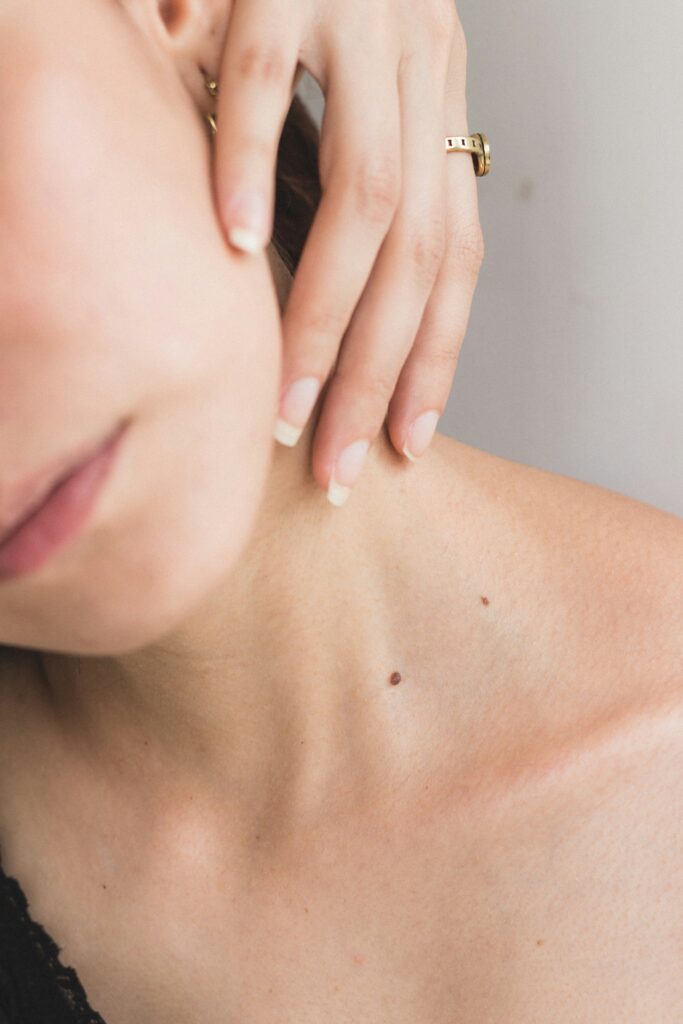What Are Botox in a Bottle Peptides and How Do They Work?
The phrase “Botox in a bottle” gets thrown around a lot —but when it comes to peptides like Argireline (Acetylhexapeptide-3) and Leuphasyl (Pentapeptide-18), there’s more than just marketing behind the name. These aren’t your typical hydration or barrier repair actives. They work on a deeper level—mimicking your body’s own neurochemical messengers to subtly relax muscle movement.
To understand how that works, we need to talk about SNARE proteins—the molecular machinery that helps neurons communicate with muscle cells. When a nerve wants a muscle to contract, it sends acetylcholine into the synapse (the space between nerve and muscle). But first, it needs SNARE proteins like SNAP-25 to help the acetylcholine-filled vesicles fuse with the neuron’s membrane.
Argireline, a synthetic peptide, mimics part of the SNAP-25 protein. By competing with SNAP-25 in the SNARE complex, it makes that fusion process less efficient. The result? Less acetylcholine is released, which means less muscle contraction—and smoother skin, especially in areas prone to expression lines like crow’s feet and the forehead.
Leuphasyl, on the other hand, mimics enkephalins, natural pain-relieving peptides that inhibit nerve cell activity. It interferes with acetylcholine signaling via a different mechanism, reducing the skin’s response to muscle contraction.
Together, these peptides offer a non-invasive alternative to neuromodulators—gentler, but built on real science.
- What Are Botox in a Bottle Peptides and How Do They Work?
- Argireline® and Leuphasyl®: The Science Behind Botox-Like Results
- Mechanisms of Action Explained Simply
- Formulation Matters: Getting Results from Peptides
- Ingredient Interactions: What Peptides Pair With and What to Avoid
- Who Benefits Most from Neuropeptides?
- How to Use Botox in a Bottle Peptides for Smoother Skin
- Botox in a Bottle vs Botox Injections: Key Differences
- Your Turn:
Argireline® and Leuphasyl®: The Science Behind Botox-Like Results
Argireline is backed by clinical data to reduce wrinkle depth. In a placebo-controlled trial, a 10% Argireline cream applied twice daily for 30 days reduced wrinkle depth by 30% in the periocular area (reference study). Importantly, the peptide worked without the irritation or downtime associated with injectable neuromodulators.
Pentapeptide-18 (Leuphasyl) is a Botox-like peptide that works by mimicking the skin’s own enkephalins to reduce nerve signals and soften expression lines. Research shows that at just 2%, Leuphasyl is both safe and effective, delivering visible wrinkle reduction—while its D-tyrosine component can also help lower melanin production for a more even skin tone. For even better results, studies recommend pairing Leuphasyl® with Argireline®, allowing these two “Botox in a bottle” peptides to target wrinkles from different angles for a smoother, longer-lasting effect.
But let’s temper expectations: these results aren’t immediate, nor do they match the dramatic results of botulinum toxin injections. These peptides require consistent use over 4 to 8 weeks to deliver visible smoothing. They’re subtle—but steady.

Botox in a bottle peptides smooth fine lines and soften expression wrinkles, giving science-backed results without needles or frozen facial movement.
Mechanisms of Action Explained Simply
Let’s break this down further.
- Argireline works pre-synaptically—at the nerve level—where it disrupts the machinery (SNARE complex) that helps vesicles containing acetylcholine merge with the cell membrane. This reduces neurotransmitter release, which then limits how strongly the muscle contracts.
- Leuphasyl acts post-synaptically, mimicking natural peptides that block signals in the muscle cell after they’ve arrived. Think of Argireline as cutting the message short and Leuphasyl as telling the recipient to ignore it.
This difference matters: when used together, these peptides modulate muscle activity from two angles. That’s why their combination yields stronger and faster results than either one alone.

Argireline works at the nerve level, where it slows down the process that tells muscles to contract.
Leuphasyl works at the muscle level, copying natural peptides that tell the muscle to ignore those signals.
Think of Argireline as stopping the message before it’s sent, and Leuphasyl as deleting it when it arrives.
Fun fact: Waglerin-1, a peptide in snake venom, inspired other muscle-relaxing peptides like Syn-ake (Tripeptide-3). Like Argireline, Syn-ake blocks acetylcholine receptors, offering yet another route to skin relaxation—but often with a stronger effect.
Formulation Matters: Getting Results from Peptides
Peptides are sensitive. If the product you’re using doesn’t consider pH, packaging, or penetration enhancers, even the best peptide won’t do much.
For Argireline and Leuphasyl to work:
- pH should be neutral to slightly acidic—around 5.0 to 6.5 is ideal.
- Packaging should be air-tight and opaque, since peptides degrade with light and oxygen.
- Formulators often include penetration enhancers like liposomes or nano-carriers to help these peptides reach the right depth in the skin.
Texture and consistency also influence absorption. Lightweight serums often work best for peptide delivery, especially when applied to slightly damp skin to improve bioavailability.
Table: Formulation Factors That Affect Peptide Efficacy
| Factor | Optimal Condition | Why It Matters |
| pH | 5.0–6.5 | Maintains peptide stability |
| Packaging | Airless, opaque containers | Protects against light and oxidation |
| Base formulation | Water-based serum | Enhances delivery through the skin |
| Additives | Glycerin, hyaluronic acid, liposomes | Boosts penetration and skin hydration |

Pro Tip: If your peptide serum comes in a dropper bottle and smells metallic or has changed color, oxidation might have occurred—meaning your active might no longer be active.
Ingredient Interactions: What Peptides Pair With and What to Avoid
One of the more overlooked aspects of using “Botox-like” peptides is how they interact with other skincare ingredients. These aren’t plug-and-play compounds—they need the right context to truly work.
Let’s clarify: neuropeptides like Argireline (acetylhexapeptide-3) and Leuphasyl (pentapeptide-18) operate best in gentle, supportive environments. They thrive in hydrating, pH-balanced formulas—think water-based serums rich in hyaluronic acid, glycerin, or panthenol. These help peptides remain stable and improve their bioavailability.
They also show good synergy with ingredients that calm the skin, such as niacinamide, allantoin, or bisabolol, which may even enhance their wrinkle-reducing potential by soothing irritation and improving skin barrier function.
However, combining them with low-pH ingredients such as L-ascorbic acid, glycolic acid, or salicylic acid can lead to peptide degradation. The acidic environment can alter their structure before they have a chance to interact with skin cells.
Table: Ingredient Compatibility at a Glance
| Ingredient Type | Compatibility with Neuropeptides | Why It Matters |
| Hyaluronic Acid, Glycerin | Compatible | Enhances hydration and absorption |
| Niacinamide | Compatible | Supports elasticity and barrier repair |
| Low-pH Vitamin C (L-AA) | Not Recommended | May degrade peptide chains |
| Glycolic/Salicylic Acids | Not Recommended | Acidic pH disrupts peptide stability |
| Ceramides, Panthenol | Compatible | Reinforces skin structure and boosts benefits |
Pro Tip: If you’re using low-pH actives, apply them in a separate routine—ideally in the evening—while saving neuropeptides for your morning skincare.
Who Benefits Most from Neuropeptides?
These peptides aren’t designed for everyone—but if your concern is early signs of aging, they may be one of your most accessible allies.
Do you see faint crow’s feet forming? Notice subtle lines between your brows when you’re not frowning? That’s where neuropeptides shine. They help minimize muscle contractions that deepen these expression lines over time, acting almost like a subtle buffer between repetitive movement and your skin’s structural proteins.
They’re also ideal for:
- Those with sensitive skin who can’t tolerate more aggressive actives like retinoids.
- Individuals who are needle-averse, or who want to extend results between Botox treatments.
- People in their late 20s to early 40s looking to maintain smoothness and delay deeper wrinkle formation.

However, for advanced photodamage or deeper wrinkles, peptides will have limitations. Their benefits are cumulative and preventative, not corrective. Think of them more as a daily tool for subtle, sustained improvement.
How to Use Botox in a Bottle Peptides for Smoother Skin
Using neuropeptides effectively is more about consistency and compatibility than clever layering.
Here’s how to do it:
- Apply peptide serums after cleansing and while your skin is slightly damp to enhance penetration.
- Let the product absorb fully before applying moisturizers or sunscreen.
- Use twice daily for optimal results—morning and night.
- Avoid layering directly with acidic or exfoliating serums.

What to expect: You won’t see dramatic overnight changes. Most studies show visible improvements—like softened expression lines or smoother skin texture—only after 4 to 8 weeks of daily use.
Botox in a Bottle vs Botox Injections: Key Differences
Short answer? No. But they absolutely have a place in well-designed, age-smart routines.
Peptides offer a non-invasive, low-risk, and gradual way to minimize movement-related lines without freezing your expressions or disrupting your skin barrier. Unlike Botox, which paralyzes muscles beneath the skin, peptides modulate surface-level tension and support collagen renewal.
Table: Peptides vs. Botox – Key Differences
| Feature | Neuropeptides (Argireline, Leuphasyl) | Botox (Botulinum Toxin) |
| Method of Application | Topical, daily use | Injectable, every 3–6 months |
| Speed of Results | Gradual (4–8 weeks) | Rapid (within 7 days) |
| Muscle Movement Suppression | Mild | Strong (paralysis) |
| Side Effects | Rare and minimal | Possible bruising, drooping |
| Skin Barrier Support | Yes | No |
So if your goal is to preserve natural expressions, support long-term skin health, and ease into anti-aging with a scientifically supported strategy, neuropeptides deserve a spot in your routine. Check out more about peptides in skincare and copper peptides.
Your Turn:
Already using peptides? Curious how they fit with your other serums? Let me know what’s in your routine—this space is for sharing, troubleshooting, and turning clinical science into clear, radiant results.
Talk to you soon!
Dr Bozica